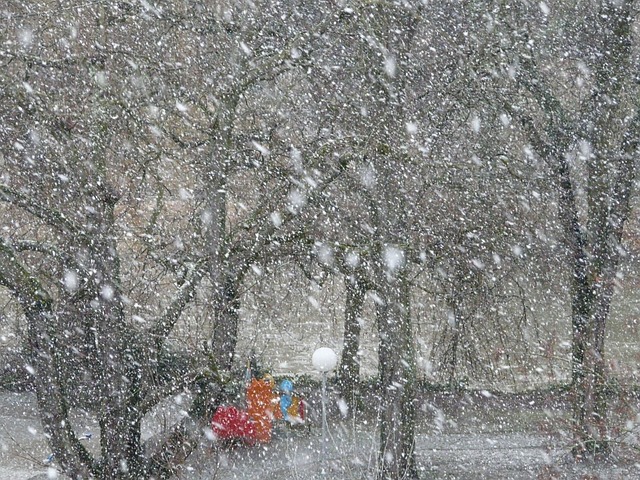
Engaging Interesting Facts About Blizzards
Interesting Facts About Blizzards
A blizzard is a severe snowstorm that is characterized by strong sustained winds of at least 35 mph and heavy snowfall. A severe blizzard can last for several hours or even days. Now let’s discover more interesting facts about blizzards, read on.
Blizzards are most common in the northern United States, but they can occur anywhere in the country. The east coast of the United States is particularly vulnerable to blizzards because of its location.
Blizzards can occur anywhere in the world where there is sufficient snowfall and cold temperatures.
Some of the most famous blizzards in history have occurred in the United States, including the “Great Blizzard of 1888” and the “Storm of the Century” in 1993. Blizzards can cause widespread damage and disruption, and even pose a threat to human life, especially when the body temperature begins to fall.
Here are some interesting blizzard facts:

Blizzards typically occur in the winter months, but can occasionally happen in the spring or fall.
The largest recorded blizzard in the United States occurred in March of 1888, it’s known as the great blizzard.
Blizzards are defined as snow storms with sustained winds of 35 miles per hour or greater.
Blizzards can be very dangerous because they can make it difficult to see and breathe, and can cause power outages and transportation disruptions.
The largest recorded blizzard in the United States occurred in March of 1888. The storm began on March 11th and lasted for two full days.
It affected areas from New York to Maine, dumping up to four feet of snow (48 inches of snow) in some places and with snow drifts reaching up to 50 feet (15 meters) high in some areas.
This storm caused widespread damage and loss of life, with an estimated 400 people dying as a result.
This is definitely one winter storm that people remember! Blizzards can be caused by many different types of storms. Some of the most common blizzard causes are cold fronts, winter storms, and hurricanes.
The Schoolhouse Blizzard, also known as the Children’s Blizzard, struck the American Plains on January 12, 1888. It was one of the most deadly blizzards in US history, killing an estimated 235 people – many of them children who were caught unaware while attending school.
Interestingly the storm began suddenly and without warning in the late morning, as temperatures plummeted and heavy snow began to fall. By midday, winds were gusting up to 60 mph (100 km/h), creating near-whiteout conditions.
The blizzard continued into the evening before finally dissipating early the next morning.
The “Storm of the Century” in 1993
The Storm of the Century was one of the most powerful and destructive storms to ever hit the United States. It caused over $5 billion in damage and killed more than 300 people. The storm affected 26 states and produced record-breaking snowfall totals in many areas making it the deadliest blizzard.
The storm also spawned tornadoes, thunderstorms, and high winds. Some areas received over two feet of snow, while others experienced thundersnow – a rare phenomenon where thunder and lightning occur during a snowstorm.
A ground blizzard is a type of winter storm that occurs when strong winds pick up loose snow from the ground and create a wall of snow that can obscure visibility.
These storms can be dangerous because they can make it difficult to see and make travel very difficult. Ground blizzards usually occur where there is cold air, and arctic climates and can last for several hours.
Blizzards form when a cold air mass meets a warm air mass, causing the warm air to rise and the cold air to sink. This can happen when a cold front moves into an area of warm, moist air.
As the air rises, it cools and condenses into clouds. The clouds eventually produce snow, which is blown by the wind towards the ground.
The Armistice Day Blizzard
An armistice day blizzard is a special kind of winter storm that can occur in the northern United States. These storms are named after the Armistice Day holiday, which commemorates the end of World War I.
Armistice day blizzards tend to be large and intense, and can often cause widespread damage and travel disruptions. In some cases, these storms can even be life-threatening.
Here are some interesting facts about armistice day blizzards:
-The first recorded armistice day blizzard occurred in November of 1940.
-These storms typically occur between the months of November and December.
-The largest armistice day blizzard on record happened in November of 1966 and affected parts of Minnesota, Wisconsin, and Michigan.
What Are Lake Effect Snowstorms
A lake effect snowstorm is a winter storm that occurs when cold air moves over a warmer large lake, picking up water vapor that condenses and falls as snow.
These storms can produce large amounts of snow in a short period of time and are most common in the Great Lakes region of North America.
Lake effect snowstorms usually occur when there is a large difference in temperature between the air over the lake and the air over the land. The colder the air over the lake, the more likely it is to produce snow.
These storms typically form during cold snaps in late fall or early winter, when the lakes are still mostly unfrozen.
While they can happen anywhere there is a large body of water such as the Atlantic ocean and enough temperature variation, lake effect snowstorms are most common downwind of the Great Lakes.
What Does Whiteout Conditions Mean

A blizzard is a winter storm that produces very heavy snow and strong winds. Blizzards can paralyze an entire region. They are most common in the northern United States but can occur anywhere in North America.
The term “whiteout” describes a weather condition in which visibility is severely restricted by falling or blowing snow. Whiteouts can occur during any type of winter storm, but they are most common during blizzards.
Whiteout conditions can be extremely dangerous because it is difficult to see where you are going. If you are driving in low visibility, you may not be able to see the road ahead of you.
If you are walking in blizzard conditions, you may not be able to see obstacles in your path. If you find yourself in a whiteout, the best thing to do is to stay where you are until the storm passes.
The National Weather Service is a federal agency that is responsible for providing weather forecasts and warnings for the United States. The agency was established in 1870, and it is headquartered in Silver Spring, Maryland.
The National Weather Service provides a variety of products and services, including weather forecasts, blizzard warnings, severe weather warnings, and climate monitoring. The agency also operates a network of weather stations across the country that collect data about current conditions and forecast future conditions.
The National Weather Service is an important resource for people who live in areas that are susceptible to severe weather conditions. The agency’s products and services can help people stay safe during times of inclement weather.
A blizzard is a severe weather condition characterized by low temperatures, strong winds, and heavy snowfall. They are most common in cold regions such as the Great Plains of North America.
The Great Plains is a vast region of grasslands that extends from the Rocky Mountains in the west to the Mississippi River in the east. The region experiences very cold winters, making it prone to blizzards.
How Does a Blizzard Affect The Human Body?
A blizzard can have a significant impact on the human body. The cold weather can cause hypothermia, frostbite, and other health problems such as heart attacks.
Hypothermia is a condition in which the body loses heat faster than it can produce heat. Symptoms of hypothermia include shivering, confusion, drowsiness, and slurred speech.
If not treated promptly, hypothermia can lead to coma and death. Frostbite is another danger of exposure to cold weather. It occurs when the skin and tissues are exposed to wind chill, and cold temperatures and the blood vessels constrict.
This can cause the skin to become pale or blue and numb. In severe cases, frostbite can lead to amputation. While blizzards can be dangerous conditions, there are steps that people can take to stay safe. Dress in layers of loose-fitting, warm clothing.
Now read my Interesting Facts About Electricity article.


One Comment
Pingback: